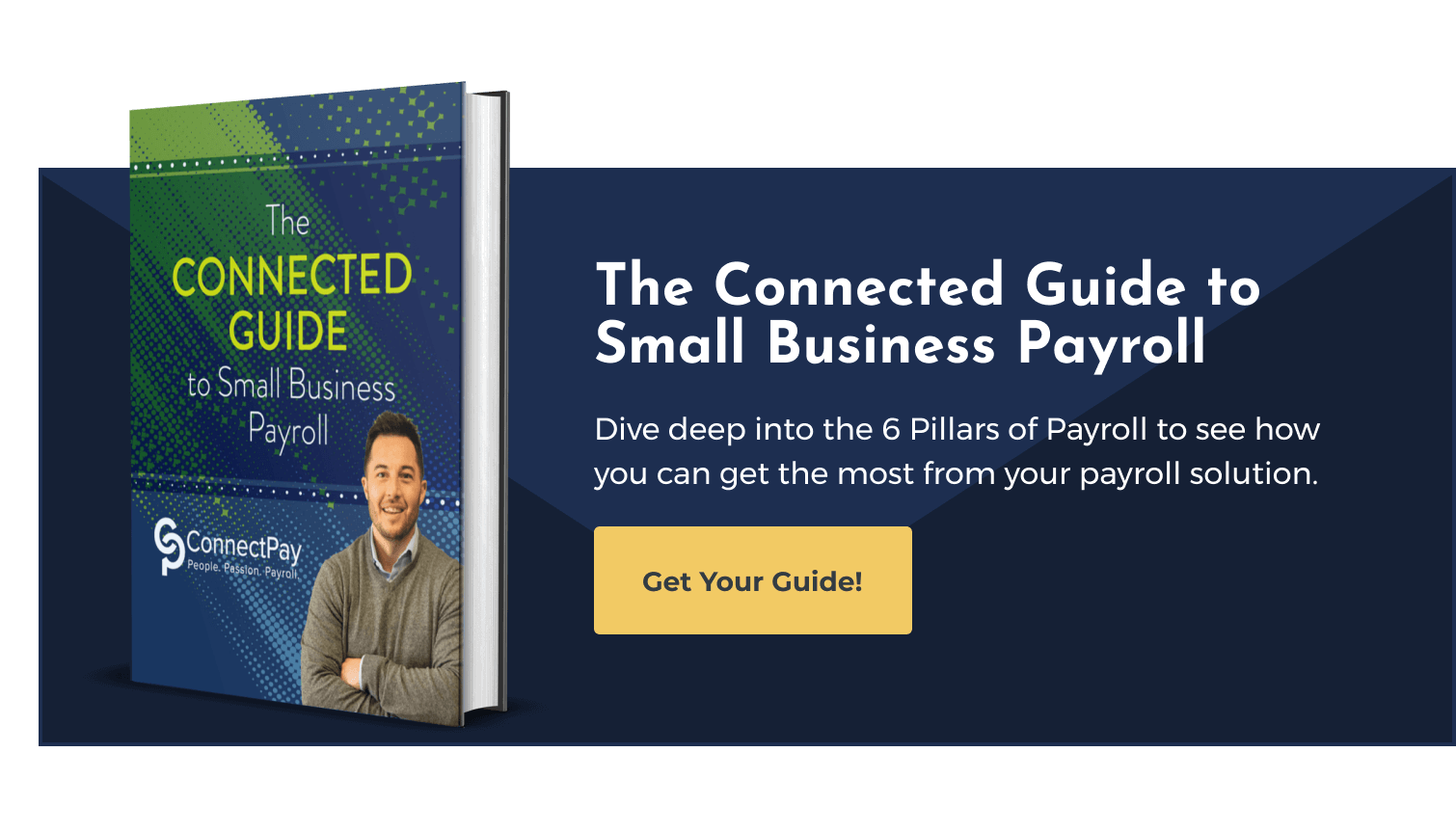How to Open a Flower Shop: 5 Steps to Success

You love creating complex floral arrangements. You’re passionate about making events and milestones just a little more special. So, naturally, you’ve decided you want to open a flower shop.
It’s exciting, right? Think of all the smiles you’ll bring to your customers’ faces and the events you’ll make special. But now you’re looking into opening your shop — do you feel a bit overwhelmed?
There’s a lot that goes into opening a flower shop. From crafting a business plan to finding the perfect location and managing inventory, running your own business is no walk in the park. Add taxes, payroll, and managing employees into the mix, and you might start to panic.
We’re here to help! In this article, we’ll take you through every step of opening your flower shop. As payroll specialists, we’ll help simplify your processes and ensure you know everything you need to about hiring employees, wages, and anything that payroll touches.
How to Open a Flower Shop
Flowers are a timeless language of love, joy, and condolence. But can you turn flowers into a blooming business?
Flower shops are lucrative due to the countless occasions people need flowers for — from Valentine’s Day and Mother’s Day to weddings, funerals, and birthdays. Sometimes, people buy flowers “just because.” But you’ll need a few essential elements for your store to flourish.
First, seek to understand market trends. Did you know that the United States is the biggest consumer of cut flowers globally? Americans spend $1.83 billion annually. But what exactly are they buying? Focus on the people in your local area — are they leaning towards exotic, imported blooms or locally grown wildflowers?
Next, look at your competition. In a garden full of roses, a sunflower stands out. Understanding your competitors’ unique offerings and strengths and weaknesses will help you carve out a niche for your flower shop. For example, if complaints about your local competitors center on poor customer service, make it your unique value proposition to provide stellar customer service.
Finally, if you plan to have employees, you’ll need to consider payroll and everything it touches, such as taxes, employee benefits, HR, and insurance. It’s essential to set this up before you open your store. Partnering with a payroll provider and letting them take on some of the heavy lifting ensures you’ll have time to focus on your dream: opening your flower shop.
1. Crafting Your Business Plan
Fail to plan, plan to fail. Look at your business plan as a roadmap to success.
What’s Your Vision?
What type of flower shop do you envision? Perhaps you want a small boutique offering higher-priced exotic plants. Or an events-focused shop that specializes in grand, breathtaking floral arrangements. You could also be an all-rounder, catering to daily flower needs and special occasions.
Market trends and your location will affect your decision. What do your potential customers want?
Calculating Your Costs
Costs can add up pretty quickly. From startup to ongoing expenses, you’ll have a lot to consider. But you need to invest to grow. Factor in:
- Buying flowers
- Renting or buying your shop
- Purchasing equipment
- Marketing expenses
- Hiring your first employees
Then you’ll have ongoing costs like:
- Utilities
- Salaries
- Flower replenishment
- Insurance
- Taxes
Getting Your Funding
How will you get funding for your venture? Perhaps you have savings to dip into. But you can explore other avenues like bank loans, investors, or crowdfunding. Finally, you must forecast your potential earnings. Consider your pricing strategy, estimated sales, and projected growth.
Related Read: 6 Tips for New Entrepreneurs
2. Finding the Perfect Spot
One of the most important decisions you’ll make is where you decide to set up shop. Where are your customers? Convenient and attractive locations draw people in. Think busy streets and shopping malls. You could also set up shop near hospitals or corporate offices.
This is where it pays to know who your ideal customer is. You’ll want a prominent location to cater to customers who grab a bouquet on the go. But if you cater to large corporate events, you’ll want a little bit more exclusivity.
Look for your competition. Don’t set up shop too close to direct competitors. But if you’re attracting different people, a location with other non-competing retailers can attract more foot traffic.
Finally, do your research on zoning regulations and licensing requirements. Don’t choose your dream location only to realize it’s subject to a long list of rules and regulations that could affect how you run your business.
3. Stocking Your Shop
Your vision is clear, and you have the perfect location. Now it’s time to stock your shop!
First, select your suppliers. You need reliable suppliers who provide quality, fresh flowers and fit your budget. You can often find suppliers who will offer better terms on high-volume orders. Look for vendors offering the shortest supply chain between the grower and your shop.
Next, should you source locally or from further afield? Local growers can likely provide fresher flowers and support the local economy, but you can find more exotic blooms with international suppliers. Again, though, suppliers from further afield require a longer supply chain. What happens if flowers aren’t up to your standards when they arrive? Discuss this with potential suppliers.
Finally, it’s time to get creative! The part you’ve been waiting for. Choosing the types of flowers and various arrangements to offer is the most exciting part of running your shop. Bouquets, centerpieces, flower baskets — the choice is yours!
4. Marketing Your Flower Shop
Once you’ve set up shop, you need to attract your ideal customers. Start with your brand. Make it distinctive and vibrant. Your brand includes your name, logo, color scheme, and, most importantly, the vibe you want to create. What sets you apart?
Next, think about how you’ll promote your business. If you’re social media savvy, you might consider Instagram, where images and short-form videos can display your arrangements and draw engagement from ideal customers. You could also offer discounts for first-time buyers.
Loyalty programs, special discounts for regular customers, or a free birthday bouquet can make your customers feel special and keep them coming back.
5. Managing Your Payroll
Starting a small business is a rewarding but demanding venture. And many small businesses struggle to manage finances early on. Yet managing finances well is crucial to your store’s success. Starting with payroll is an excellent first step.
Payroll isn’t only about paying your employees. You also have responsibilities like administering benefits, withholding and remitting taxes, and maintaining accurate records. It all starts with your first employee — you’ll need to navigate job roles, contracts, compensation, and legal requirements.
Related Read: 4 Things Small Businesses Need to Know About Staying Compliant with HR Rules
It is crucial to understand tax forms and wage structures when managing payroll. You must decide whether to pay employees hourly or on a salary basis, along with when they will receive their payments (weekly, biweekly, monthly, etc.).
Another critical aspect of payroll management is understanding the difference between W2 and 1099 contractors and which forms to use. Here’s a handy guide: 1099 vs. W2: 4 Tips for Classifying Workers Correctly.
Finally, ensure you’re on top of payroll taxes. This includes withholding taxes from employees’ paychecks, paying employer payroll taxes, and staying current with employment laws. Keeping your processes up-to-date and consulting with a tax professional can help you stay compliant.
How to Open a Flower Shop: Next Steps
Follow the steps above, and you can confidently open your flower shop! Why do we consider payroll an essential part of the process? Aside from being a payroll service provider, we’re also passionate about small, local businesses succeeding.
And payroll touches many other aspects of your business. It’s linked to HR because it involves managing employees’ information, compensations, leaves, and other employment-related matters.
It’s linked to bookkeeping and staying on top of your business’s financial health. It’s also linked to employee benefits, such as health insurance, retirement plans, and vacation time. Finally, you’ll need Workers’ Compensation insurance. You must calculate and pay the premiums on time as part of payroll.
Our team at ConnectPay knows how challenging it can be to manage payroll along with these interconnected areas. We’re here to handle your payroll, so you can focus on what you do best — growing your flower shop.
But that’s not all we do. We can also connect you with local experts who can help your business succeed. Tax issues don’t require hours of waiting on hold. We aim to connect you with local experts who can quickly resolve your issues.
To discover more about managing payroll and how we help your business thrive, check out The Connected Guide to Small Business Payroll today.






